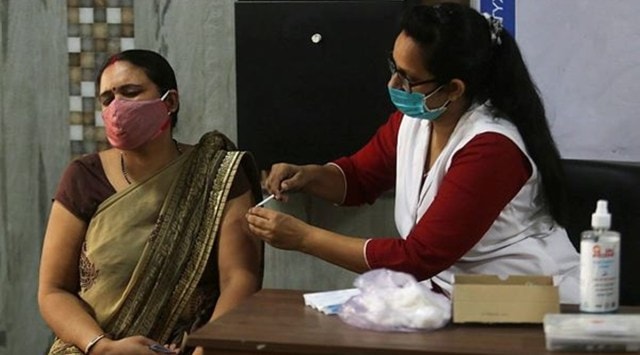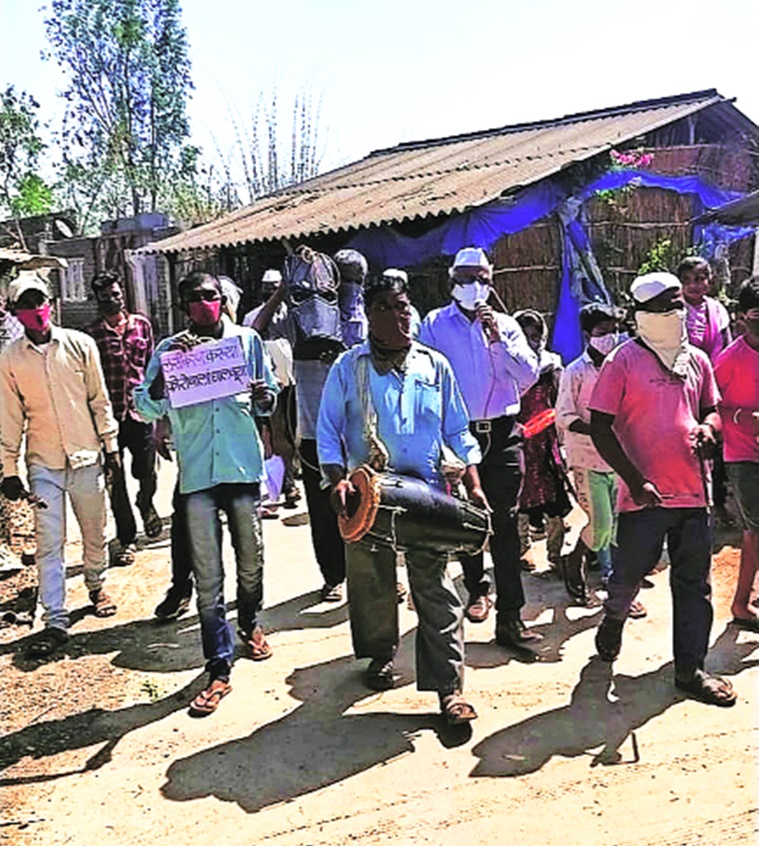- India
- International
Hesitancy, inaccessible vaccination centres — only 19.71% of Nandurbar’s population above 45 years got jabs
Several programmes like folk dance and dramas are being organised for creating awareness about vaccines in every village.
 The remote location of many villages has also made the job of the district administration difficult as accessing these areas is deemed to be a problem. (File Photo)
The remote location of many villages has also made the job of the district administration difficult as accessing these areas is deemed to be a problem. (File Photo)The tribal-dominated district of Nandurbar, located 400 km north of Mumbai, has one of the lowest vaccination rates in the state. Only 19.71 per cent of Nandurbar’s population above 45 years of age has been vaccinated as against the state average of 32.46 per cent.
This is being attributed to vaccine hesitancy among tribals who for generations have fallen back on traditional folk medicine to treat illnesses.
The remote location of many villages has also made the job of the district administration difficult as accessing these areas is deemed to be a problem.
Nandurbar has a population of around 20 lakh, of which 6 lakh people are over the age of 45 years. Among them, the district has been able to vaccinate only 1.1 lakh residents.
 Villagers being made aware of the need to get vaccinated through folk songs at Shivpur village. (Express Photo)
Villagers being made aware of the need to get vaccinated through folk songs at Shivpur village. (Express Photo)
“There is a strong fear about vaccines in the minds of the people, particularly those staying in remote areas. Many believe that vaccines would do them more harm than good. In rural pockets, there is a firmly entrenched belief that vaccines are part of some bigger conspiracy against the tribal way of life and sadly, the government has not been able to counter this narrative,” said Jitendra Walvi, a local activist from Molgi village.

Acknowledging the problem, local officials claimed that they are holding orientation camps to remove the fear of vaccines from people’s minds.
Several programmes like folk dance and dramas are being organised for creating awareness about vaccines in every village. School teachers, Anganwadi sevikas and Asha workers have been tasked with convincing villagers to get themselves vaccinated.
The administration is also distributing sanitisers, biscuits and household items.
Another reason behind vaccine hesitancy is inaccessible vaccination centres in the district. Nandurbar, spread over roughly 6,000 sq km, has 91 functional vaccination centres. Mumbai by contrast – spread over 600 sq km, one-tenth the size of Nandurbar – has over 150 functional vaccination centres as on Saturday.
Officials claimed that while willing villagers do have to travel a large distance to get vaccinated, they have started mobile vaccination centres that can vaccinate people in interior villages.
“We have set up teams… vehicles with team members are going to villages to administer vaccines. Convincing villagers is not an easy job, we have to take the help of residents who can speak in the local language. This drive is in place and people are taking vaccines,” said Nandkumar Suryavanshi, Block Development Officer of the remote Akkalkuwa tehsil.
Many parts of Akkalkuwa and Dhadgaon tehsils do not have Internet network connectivity.
“There is no network in most places and hence, documents and details of villagers are taken offline. In many cases, our staffer has to go 5 to 6 km, where there is Internet connectivity, for registration,” said Ashok Pataet, nodal officer of the district for the vaccination programme.
Apr 23: Latest News
- 01
- 02
- 03
- 04
- 05






































